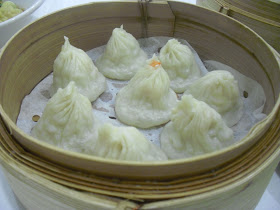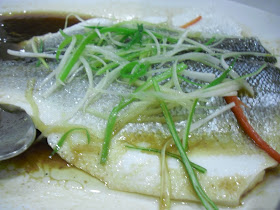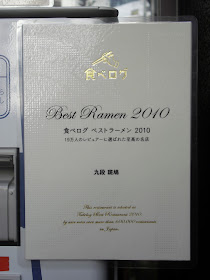 |
| Xiao long bao |
Whilst we're used to Chinese restaurants offering a varied mix of dishes, most places anchor themselves in one cuisine. At Dumplings' Legend, the offerings include Cantonese, Shanghainese, Sichuan, Taiwanese, and Straits Chinese dishes with no single cuisine dominating. So it was with some difficulty that I managed to order a mix of dishes that I thought might work as a cohesive dinner.
 |
| Sweet potato fried with salted egg yolk |
 |
| Sichuan spicy wonton |
紅油黃瓜 Cucumber in Chilli Oil (£4)
黃金炸地瓜 Sweet Potato Fried with Salted Egg Yolk (£4.50)
籠抄手 Sichuan-style Spicy Wonton (£4.50)
These were the highlight of the evening, in particular the spiky Sichuan starters of the cucumber and wontons. I also liked the more-ish quality of the sweet potato fried with salted egg yolk. However, despite being described as starters, these dishes came out with the rest of the order in a haphazard fashion. This disrupted the flow of the dinner and detracted from the enjoyment of the meal overall. You could argue that this is the Chinese way, but at the very least, it would've been nice to be given the choice.
 |
| Steamed prawn dumplings |
蟹粉小籠包 Pork Crab Meat Siu Loung Bao (£6.50/8 pcs)
蝦肉蒸餃 Steamed Prawn Dumplings (£6.00/8 pcs)
The siu loung bao (this is the Cantonese transliteration of the Mandarin name, xiao long bao) held their soup but I could barely pick out any crab. They're probably on a par with Leong's Legends, which means they're pretty good by London standards. However, they remain pretty average compared to XLB found in China.
That's more than can be said for the steamed prawn dumplings. I was expecting har gau 蝦餃 with their translucent tapioca wrapper and juicy prawn filling. Instead these were ugly doughy affairs with a dry filling – pretty abysmal. Avoid.
 |
| Three-cup chicken |
三杯雞 Taiwanese 'Three-cup' Chicken (£9.50)
清蒸鱸魚排 Sea bass Fillet Steamed with Soy Sauce (£17.50)
蒜子菜心 Stir-fried Choi-sum with Garlic (£7.80)
乾炒牛河 Fried Wide Rice Noodles with Beef (£7.50)
I was looking forward to the three-cup chicken, so called because it's made with a cup each of soy sauce, sesame oil & rice wine. Sadly a dish that should've been called 'one-cup chicken and red pepper' came out instead. Two of the cups had gone AWOL leaving the dish tasting mainly of soy sauce. Leong's Legends does this dish so much better.
 |
| Steamed sea bass fillet |
The Details
Service was OK in a perfunctory Chinatown way, but I didn't care for the lighting, which was interrogation strength and a bit of a mood-killer. And in a recurring theme of this review, the ambience compares poorly to Leong's Legends.
Together with steamed rice, tea, and a bottle of Riesling (chosen by my old mate, Mr Wine), the damage came to around £112 including 12.5% service, which is fair enough for a party of four.
This restaurant also serves a full dim sum menu before 5pm, which may be a better proposition than dinner.
The Verdict
Dumplings' Legend is a bit of a missed opportunity let down by an over-ambitious menu that fails to consistently deliver. In my opinion, they would be much better off emulating the Din Tai Fung formula by majoring in the cuisine of Shanghai/East China. Mind you, there are worse places to eat in Chinatown and if you don't mind eating in Europe's most brightly lit dining room then this is a decent stand-by option.
If you like the look of…
...the Sichuan starters then you'll probably like the Empress of Sichuan, which is easily my favourite Chinatown restaurant. But if the xiao long bao and three-cup chicken is more your thing then I recommend Leong's Legends (you might have already worked this out by now!). Incidentally, it is my understanding that the same company that operates these two restaurants also manage Dumplings' Legend.
Dumplings' Legend, 15-16 Gerrard Street , London, W1D 6JE
(Tel 020-7494-1200) Nearest tube: Leicester Square
Joining me for dinner was fellow blogger, Ute of Hungry In London, her friend, and Mr Wine. For Ute's review of this restaurant, please click here.





























